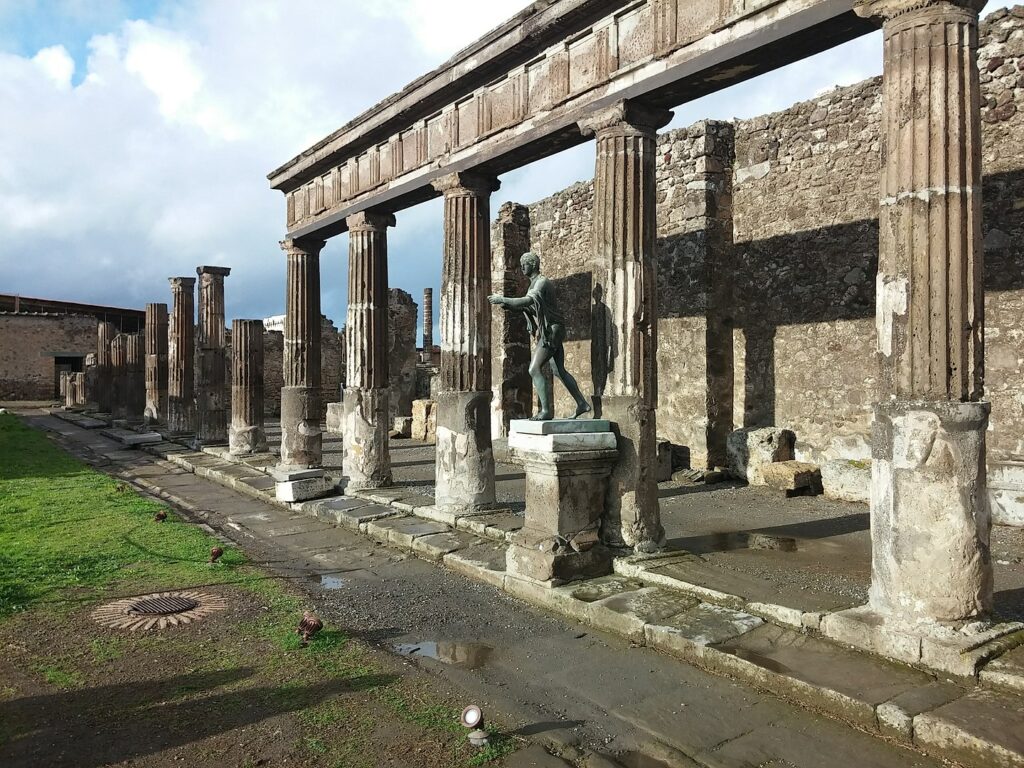“If you want to understand ancient Rome, its architecture, its history, the sprawl of the Roman Empire, you’ve got to go Rome.” So says archaeologist Darius Arya in the video above, making a fair, if obvious, point. “But you also have to go to the Vesuvian cities”: that is, the settlements located near the volcano Mount Vesuvius on the Gulf of Naples. “You have to go to Herculaneum. You must go to Pompeii. Not just because they’re famous, but because of the level of preservation.” This preservation was a side effect of the explosion of Vesuvius in 79 AD, which destroyed all life in Herculaneum and Pompeii, but also kept the basic structures of both cities intact; visiting either one today allows us to “get immersed in the world of the Romans.”
It is in Pompeii that the video’s creator Manuel Bravo (previously featured here on Open Culture for his explanations of the Great Pyramids of Giza and Filippo Brunelleschi’s dome in Florence) immerses not just himself but also us in that world.
He does so with high-resolution travel footage, but also with his explanations of the city’s architecture and urban planning, breaking down the details of everything from its grand Forum (“anticipating modern practice by almost 2,000 years” as a “pedestrian-only precinct”) to its complexes of baths, to its thermopolia (“essentially ancient fast-food restaurants“). Even more revealing are its humbler features, such as the stepping-stones across streets that allowed citizens to avoid “the rainwater, sewage, and animal waste that would accumulate there.”
“Almost every building in Pompeii has interior wall paintings, from private residences to public spaces such as baths and markets,” says Bravo, and these omnipresent works of art “offer valuable insights into the everyday life and cultural values of ancient Roman society.” (And indeed, they’re still offering new ones: just last month, a rediscovered Pompeiian fresco showed the world an ancient precursor to pizza.) They also evidence the surprising popularity of trompe-l’œil, where artists create the illusion of walls constructed from solid marble, or even lush outdoor spaces. Even the already-grand Domus Romana, the form of housing of choice for affluent Pompeiians, incorporated paintings to look grander still. Even once you make it, as the ancients clearly knew, you’ve still got to fake it.
Related content:
Pompeii Rebuilt: A Tour of the Ancient City Before It Was Entombed by Mount Vesuvius
A Drone’s Eye View of the Ruins of Pompeii
Watch the Destruction of Pompeii by Mount Vesuvius, Re-Created with Computer Animation (79 AD)
A Newly Discovered Fresco in Pompeii Reveals a Precursor to Pizza
Based in Seoul, Colin Marshall writes and broadcasts on cities, language, and culture. His projects include the Substack newsletter Books on Cities, the book The Stateless City: a Walk through 21st-Century Los Angeles and the video series The City in Cinema. Follow him on Twitter at @colinmarshall or on Facebook.
